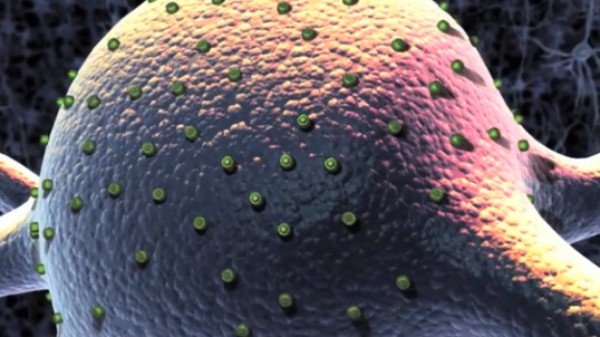3D Technology Models Your Brain As You're Thinking
| Robert Sarkanen | | May 20, 2014 10:28 PM EDT |
(Photo : MIT) 3D visualization of the neuron of a worm.
Researchers at the Massachusetts Institute of Technology and the University of Vienna have created an imaging system that can create 3D models of ongoing brain activity of living animals.
This is the first time scientists have been able to generate 3D video of an entire brain at a millisecond timescale. It could help researchers discover how neurons and neuronal networks process sensory information and generate behaviour, according to the report published by Nature Methods on Sunday.
Like Us on Facebook
Another possible application for the new brain-mapping technology is helping neuroscientists learn more about the biological basis of brain disorders such as Parkinson's disease and Alzheimer's. This can be achieved by using the new imaging technology to chart the exact cells and networks affected.
The team used the technique to monitor the activity of every single neuron of the worm Caenorhabditis elegans at once. They also created images based on the entire brain of a zebratish larvae. This gives biologists and neuroscientists a more complete view of neural activity than previously thought possible.
Ed Boyden, associate professor of biological engineering and brain and cognitive science at MIT emphasized the importance of the new technology: "If you want to understand how information is being integrated from sensation all the way to action, you have to see the entire brain".
The brain-mapping is based on prior research of engineered fluorescent proteins that can be used to visualize the electrical impulses in the brain. Until now, however, no imaging technology has been available that could oversee the entire brain at speeds high enough to catch these electrical impulses in action.
Traditional 3D neural imaging has been known as a slow, time-consuming process where each examined point in the brain is scanned and rendered individually.
This new method is instead based on light-field imaging, which creates 3D images by measuring the angles of incoming rays of light. According to Nature Methods, the MIT and Austrian researchers modified and applied a light-field microscope to monitor neural activity for the first time for this very purpose.
The modified microscope uses a multitude of lenses to split the light emitted by an object into several light dots used to determine exact three-dimensional depth.
This allows extremely high-speed high-detail 3D imaging as opposed to traditional technology such as Magnetic Resonance Imaging (MRI) or ultrasound.
TagsNeural activity, neurons, brain, Alzheimer's, Parkinson's, 3D, Massachusetts Institute of Technology, University of Vienna, 3D imaging
©2015 Chinatopix All rights reserved. Do not reproduce without permission
EDITOR'S PICKS
-

Did the Trump administration just announce plans for a trade war with ‘hostile’ China and Russia?
-

US Senate passes Taiwan travel bill slammed by China
-

As Yan Sihong’s family grieves, here are other Chinese students who went missing abroad. Some have never been found
-

Beijing blasts Western critics who ‘smear China’ with the term sharp power
-

China Envoy Seeks to Defuse Tensions With U.S. as a Trade War Brews
-

Singapore's Deputy PM Provides Bitcoin Vote of Confidence Amid China's Blanket Bans
-

China warns investors over risks in overseas virtual currency trading
-

Chinese government most trustworthy: survey
-

Kashima Antlers On Course For Back-To-Back Titles
MOST POPULAR
LATEST NEWS
Zhou Yongkang: China's Former Security Chief Sentenced to Life in Prison

China's former Chief of the Ministry of Public Security, Zhou Yongkang, has been given a life sentence after he was found guilty of abusing his office, bribery and deliberately ... Full Article
TRENDING STORY

China Pork Prices Expected to Stabilize As The Supplies Recover

Elephone P9000 Smartphone is now on Sale on Amazon India

There's a Big Chance Cliffhangers Won't Still Be Resolved When Grey's Anatomy Season 13 Returns

Supreme Court Ruled on Samsung vs Apple Dispute for Patent Infringement

Microsoft Surface Pro 5 Rumors and Release Date: What is the Latest?










